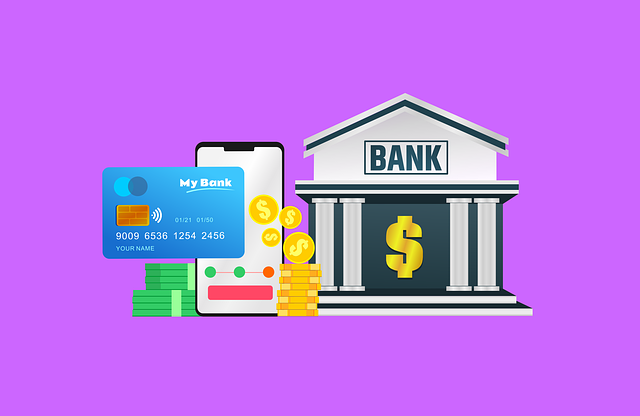Category: Business Line of Credit: Flexible Funding Options
Business Line of Credit: Flexible Funding Options
Introduction
In the ever-evolving business landscape, access to capital is a critical aspect of success and growth. Traditional financing options often come with stringent requirements and fixed terms, leaving many businesses seeking more flexible alternatives. Enter the Business Line of Credit (BLC), a dynamic funding solution that offers just that—flexibility. This comprehensive article delves into the world of BLC, exploring its various facets, benefits, and the profound impact it has on global business operations. We will navigate through historical contexts, economic influences, technological innovations, regulatory frameworks, real-world applications, and future trends, providing valuable insights for entrepreneurs, business owners, and financial enthusiasts.
Understanding Business Line of Credit: Flexible Funding Options
Definition and Core Components
A Business Line of Credit is a flexible financing option provided by financial institutions that allows businesses to borrow funds as needed up to a predetermined credit limit. Unlike traditional loans with fixed terms and a single draw, BLC offers a revolving line of credit, enabling borrowers to access, repay, and reborrow funds multiple times over an agreed-upon period. The key components include:
- Credit Limit: The maximum amount a business can borrow under the line of credit.
- Interest Rate: The cost of borrowing, typically variable and based on market conditions or a benchmark rate.
- Repayment Schedule: Flexible repayment terms, often with interest-only payments initially, followed by principal repayments in subsequent periods.
- Draw Period: The period during which funds can be borrowed, usually lasting several years.
- Maturity Date: The final date on which the line of credit must be repaid, including any outstanding balance.
Historical Context and Evolution
The concept of lines of credit has its roots in traditional banking practices, where merchants and traders would obtain short-term financing to cover immediate cash flow needs. However, modern BLC emerged as a response to the evolving business environment, particularly the rise of small and medium-sized enterprises (SMEs) seeking more adaptable funding solutions.
In the 1980s, the introduction of standardized credit facilities for SMEs revolutionized access to capital. Banks began offering lines of credit with simplified documentation requirements and flexible repayment structures, catering to businesses that required short-term working capital or project financing. Over time, BLC evolved to include more sophisticated features, such as variable interest rates linked to market indices, providing borrowers with protection against rising interest rates.
Global Impact and Trends
International Influence
Business Line of Credit has left a significant global footprint, particularly in regions where traditional banking services are less accessible or less tailored to local business needs. Developing economies, for instance, have embraced BLC as a means to bridge the gap between funding demands and available options. According to a study by the International Monetary Fund (IMF), countries in Asia and Africa have witnessed substantial growth in small and medium-sized enterprises, driving the demand for flexible financing mechanisms like BLC.
Regional Trends
- North America: The United States has seen a surge in BLC adoption, especially among tech startups and established SMEs seeking to capitalize on market opportunities. Canada, too, has embraced this model, with financial institutions offering tailored lines of credit to support local businesses’ growth.
- Europe: In the Eurozone, BLC has gained traction as a preferred financing option for SMEs due to its ability to provide quick access to funds and flexible repayment terms. The UK, in particular, has a robust market for business loans and lines of credit, with many digital lenders entering the space.
- Asia Pacific: This region boasts some of the fastest-growing BLC markets globally, driven by rapid economic development and a thriving SME sector. China, Japan, and Australia have seen significant increases in lines of credit extended to businesses, reflecting the demand for flexible funding.
- Emerging Markets: Countries like Brazil, India, and South Africa have witnessed an uptick in BLC usage as local businesses seek capital to navigate volatile economic conditions and seize growth opportunities.
Economic Considerations
Market Dynamics and Investment Patterns
The availability of Business Line of Credit significantly influences market dynamics by providing businesses with the financial flexibility required to invest, expand, or weather economic downturns. During periods of economic growth, BLC can fuel entrepreneurial activity and support business scalability. Conversely, in recessions, these lines of credit offer a safety net, enabling businesses to manage cash flow and maintain operations.
Role in Economic Systems
BLC plays a pivotal role in supporting economic development, especially in regions with limited traditional banking services. It fosters entrepreneurship by lowering the barrier to entry for new businesses seeking initial capital. Moreover, it encourages business growth and job creation by providing existing enterprises with accessible funding options for expansion and innovation.
Technological Advancements
Digital Transformation of BLC
The digital revolution has had a profound impact on Business Line of Credit, giving rise to:
- Online Lending Platforms: Digital lenders have entered the market, offering streamlined application processes, faster decision-making, and competitive interest rates. These platforms utilize advanced algorithms for credit scoring and risk assessment, making BLC more accessible to a broader range of borrowers.
- Mobile Banking Apps: Mobile applications allow business owners to manage their lines of credit, make payments, and track repayment schedules on the go, enhancing convenience and real-time financial oversight.
- Blockchain Integration: Some financial institutions are exploring blockchain technology to secure transactions, reduce processing times, and enhance transparency in BLC agreements.
Artificial Intelligence (AI) and Data Analytics
AI and data analytics have revolutionized credit risk assessment, enabling lenders to analyze vast amounts of business data to make informed decisions. These technologies can predict borrower behavior, identify fraudulent activities, and personalize loan offers, leading to more efficient and tailored BLC products.
Regulatory Frameworks
Legal and Compliance Aspects
Business Line of Credit is subject to various legal frameworks and regulatory bodies that ensure fair lending practices and protect borrowers’ interests. Key considerations include:
- Interest Rate Regulation: Many countries have caps or benchmarks for interest rates on BLC to prevent excessive borrowing costs, particularly for vulnerable borrowers.
- Lender Licensing and Oversight: Financial institutions offering BLC must comply with licensing requirements and maintain robust internal controls to safeguard consumer rights.
- Loan Documentation and Disclosure: Clear and transparent loan agreements are essential, outlining terms, conditions, and potential fees to ensure borrowers understand their obligations.
Real-World Applications
Case Studies
- Tech Startup Financing: A fast-growing tech startup required funds for product development and marketing but lacked the collateral traditionally demanded by lenders. They secured a BLC, allowing them to access capital without sacrificing equity. This flexible funding enabled the company to navigate market fluctuations and scale its operations successfully.
- Retail Business Expansion: A family-owned retail chain wanted to expand into new markets but needed working capital for inventory purchases and store setup. A BLC provided the necessary funds, enabling them to seize growth opportunities while managing cash flow during the expansion phase.
- Small Business Disaster Relief: After a natural disaster struck a coastal town, many small businesses faced liquidity challenges due to damaged infrastructure and lost inventory. Local banks offered emergency BLC to help these businesses cover immediate expenses and rebuild, demonstrating the role of BLC in crisis management.
Future Trends
Emerging Technologies and Innovation
The future of Business Line of Credit is set to be shaped by emerging technologies:
- Open Banking: The sharing of financial data between banks and third-party providers will enable personalized BLC products, improved credit scoring, and easier access to funds for borrowers.
- AI-Driven Personalization: AI algorithms can analyze borrower behavior and market trends to offer customized lines of credit with tailored interest rates and repayment terms.
- Tokenization and Blockchain: These technologies may revolutionize BLC by securing transactions, facilitating cross-border funding, and enabling fractional ownership of assets as collateral.
Sustainable and Impact Investing
As awareness of environmental, social, and governance (ESG) factors grows, BLC is expected to align more closely with sustainable business practices. Lenders will increasingly consider ESG criteria when evaluating borrower applications, encouraging responsible borrowing and investment.
Conclusion
Business Line of Credit represents a significant evolution in the realm of business financing, offering flexibility, accessibility, and adaptability that traditional loans cannot match. Its global reach, impact on economic development, and continuous innovation make it an essential tool for businesses navigating diverse market conditions. As technology advances and regulatory frameworks evolve, BLC is poised to play an even more pivotal role in shaping the future of global business operations.









